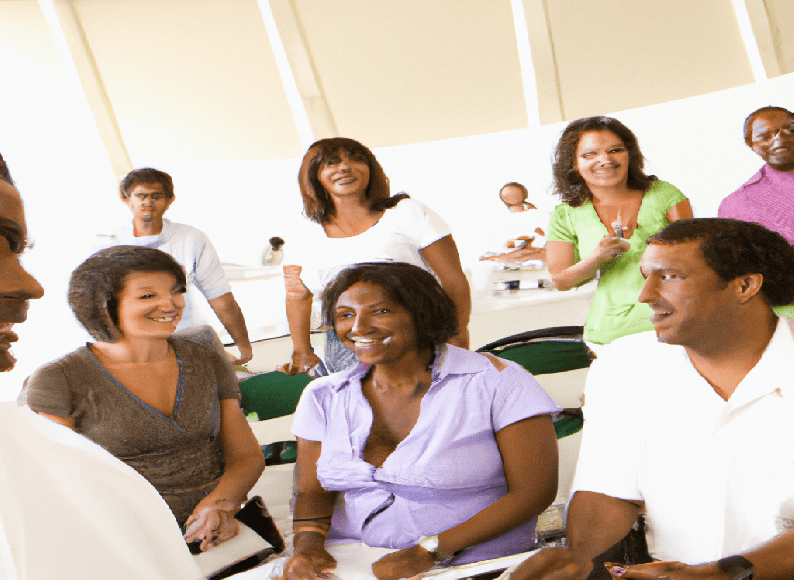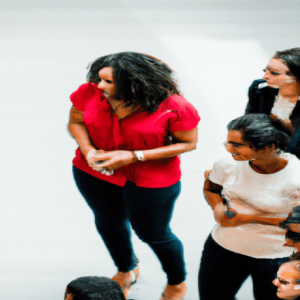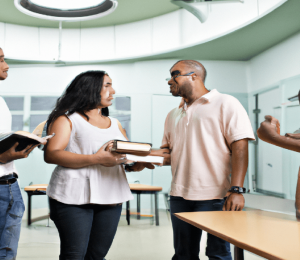Student Socialization: Effective Methods for Coping with Study Stress
Stress is an unavoidable part of being a student, frequently resulting from personal struggles, academic demands, and the difficult effort of navigating unknown futures. While a certain amount of stress may be inspiring, too much stress can have a negative effect on one’s general well-being as well as academic achievement, especially among students. The American Psychological Association reports that a considerable portion of students report experiencing symptoms of anxiety and despair, indicating that stress among students is a developing problem. Therefore, it becomes essential to handle this issue with workable and efficient solutions.
The process of socialization is essential for reducing the negative consequences of stress. Peer engagement generates a supportive atmosphere that may dramatically reduce feelings of anxiety and loneliness via meaningful talks and activities. Research has indicated that students who participate regularly in extracurricular activities and preserve a robust support system are more adept at managing the demands of their academic lives. In addition to offering emotional support, this feeling of community creates a platform for sharing experiences and coping mechanisms that are crucial for stress management.
Incorporating psychological exercises into everyday routines might be a game-changer for kids’ stress management in addition to sociability. Many mental health practitioners recommend methods like progressive muscle relaxation, deep breathing exercises, and mindfulness meditation because they work well in lowering stress and anxiety. For example, mindfulness-based techniques have been shown to dramatically lower stress and anxiety levels in college students, according to a research published in the Journal of American College Health. Students may improve their mental health by devoting a little amount of time each day to these activities, which will help them face their academic and personal obstacles with greater clarity and composure.

Socialization is an essential part of the toolset for stress management for students, not merely a means to kill time. Since humans are social beings by nature, their urge for connection does not end when they enter an academic setting. Interacting with peers in study groups, organizations, or casual get-togethers may help foster a feeling of community and support system that is essential during demanding academic times. The significance of social support is underscored by the stress resilience hypothesis developed by renowned psychologist Dr. Susan Kobasa. According to her studies, having strong social ties helps people feel in control of their circumstances and take on challenges instead of perceiving them as insurmountable.
Talking with peers about personal and academic struggles can also open your eyes to fresh ideas and solutions. Sharing and working through problems together may be a very cathartic experience that helps people feel less burdened. As students understand they are not alone in their challenges, peer conversations have been shown to really lower anxiety levels, according to the Journal of Psychosocial Nursing and Mental Health Services. Because students are exposed to a variety of perspectives and problem-solving techniques, these interactions not only reduce stress but also improve learning and critical thinking abilities.
Establishing a climate of candid communication and reciprocal assistance among students is crucial. Colleges and universities can help a lot with this by creating spaces where students feel comfortable expressing themselves and asking for help. These supportive networks can be developed through regular social gatherings, mentorship programs, and student-led support groups. In addition to assisting with stress reduction, these programs aid in students’ general development and get them ready for the collaborative nature of the professional world they are about to enter.
Moving on from the significance of socializing in stress management, let’s examine a range of practical stress-reduction strategies that include both mental and physical activities. These techniques address the intricate relationship between our bodies and thoughts on several levels and are based on scientific knowledge of the mechanisms behind stress response.
Due to their ability to treat both the psychological and physiological components of stress, psychological and physical workouts are effective methods for stress management. Stress causes our bodies to go into ‘fight or flight’ mode, a primitive reaction that generates stress-inducing chemicals like cortisol and adrenaline. While this response might be helpful in brief spurts, prolonged usage of it can have negative effects. To combat this, a variety of exercises are made to include both the body and the mind in ways that promote stress relief and balance restoration.
- In mindfulness meditation, you use your breathing as an anchor to help you concentrate your attention on the here and now. This exercise improves the functioning of the prefrontal cortex, which regulates our capacity for logical thought and emotional regulation, while also decreasing activity in the brain’s stress response region, the amygdala. Frequent mindfulness meditation has been shown to decrease cortisol levels, which in turn lessens the physical manifestations of stress.
- Exercises for Deep Breathing: Inducing the body’s relaxation response may be done simply yet effectively with deep breathing. The effects of stress-induced adrenaline surges can be countered by breathing techniques such as diaphragmatic breathing or the 4-7-8 method (inhaling for 4 seconds, holding for 7, and expelling for 8).
- Progressive Muscle Relaxation (PMR) is a technique where various body muscle groups are first tensed and subsequently released. This practice facilitates the release of muscular tension that builds up during stressful times and encourages awareness of bodily sensations. Mental stress is reduced when one relaxes after tensing up since this action signals the brain to become calm.
- Physical exercise: Endorphins are the body’s natural mood enhancers. Regular physical activity, such as running, swimming, or even yoga, causes the production of endorphins. Adrenaline and cortisol, the body’s stress chemicals, are also lowered by exercise. Furthermore, exercise helps enhance the quality of sleep, which is frequently hampered by stress.
- Guided imagery: This method entails imagining a tranquil and soothing environment or sequence of events. The use of guided imagery can help people relax and divert their focus from stressful situations. This technique is based on the ideas that mental imagery may affect physical relaxation and lessen the symptoms of stress, and that the mind and body are interconnected.
Students may enhance their mental health and academic performance by implementing these stress management techniques into their everyday routines. Every technique provides a different strategy for relieving stress, so people can choose the mix that best suits them.
Read more:
Challenges Faced by the University Health Union















